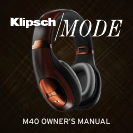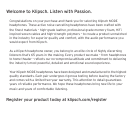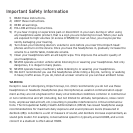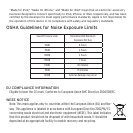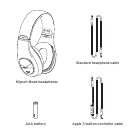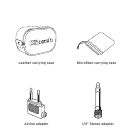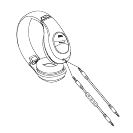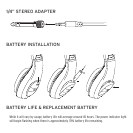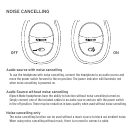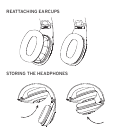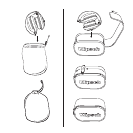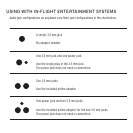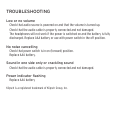1) READ these instructions.
2) KEEP these instructions.
3) HEED all warnings.
4) FOLLOW all these instructions.
5) If you hear ringing or experience pain or discomfort in your ears during or after using
any headphone audio product, that is a sign you are listening too loud. When your ears
are exposed to high volumes (in excess of 85dB) for over an hour, you may be perma-
nently damaging your hearing.
6) Turn down your listening device’s volume to zero before you insert the Klipsch head-
phones and turn on the device. Once you have the headphones in, gradually increase the
volume to a comfortable, moderate volume.
7) Clean your headphones with an antiseptic wipe. This improves the acoustic quality of
your headphones.
8) NEVER operate a motor vehicle while listening to or wearing your headphones. Not only
dangerous, it is illegal in many places.
9) NEVER operate heavy machinery while listening to or wearing your headphones.
10) We don’t recommend you use the headphones while riding a bicycle, running, or walking
in heavy traffic areas. If you do, listen at a lower volume so you can hear ambient noise.
WARNING:
Except in case of emergency, Klipsch Group, Inc. (KGI) recommends you do not use these
headphones or headsets (headphones plus microphone) as aviation communication equip-
ment as they are not engineered for many environmental conditions common in commercial
or non-commercial aircraft (including, but not limited to: altitude, temperature, noise condi-
tions, unpressurized aircraft, etc.) resulting in possible interference to critical communica-
tions. The Occupational Safety Health Administration (OSHA) has issued headphone usage
recommendations for maximum daily exposure and sound pressure levels (measured in
decibels (dB)). A decibel is a unit of measure of sound, and decibels increase exponentially as
sound gets louder. For example, conversational speech is typically around 60dB, and a rock
concert in a stadium is often about 110dB.
Important Safety Information



